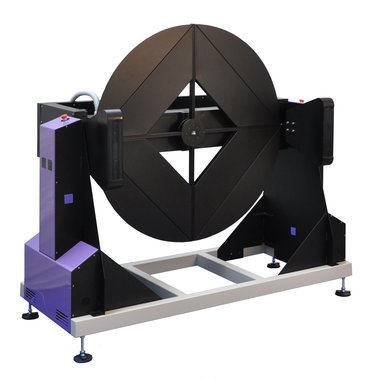... making it real with the Artificial Sky at PLEA2014

It is with great pride that betanit.com are launching a new product named Compact Artificial Sky. The CAS has been made for the Center for Advanced Research in Building Science and Energy CEPT University Ahmedabad, being presented to all participants at the PLEA 2014 conference as a state of the art tool for architectural design. The CAS, named Kiwi Single Patch, is a virtual dome type artificial sky automated mechanism. The sky dome is reproduced by a scanning process, whereby the scaled model is moved by the Kiwi around the single sky patch to reproduce the entire lighting vault.
Pure design advantage by Real-time observation
By using the Kiwi a greater scope of observation is enabled. The synthesis of mathematical and data input is therefore centralised and confirmed by this new tool of direct observation. Through a process of research triangulation for example, direct and recordable observation is highly desirable in any overarching research design strategy.
Therefore, perhaps the greatest strength of this tool is not solely in the power of observation it provides, but by effectively complementing other approaches and opening the way for imperative, spontaneous innovation.
The net result is the harnessing of the best quality of evidence available, while landing greater scope for commercial success.
Micro Dash Macro
Compact by dimension, massive in data delivery: Kiwi is an extremely powerful tool because it is able to reproduce every kind of sky (statistical or mathematic). The designer has at hand the tool to recognise and build real solutions for all scenarios.
It is also pretty fast too, the Tregenza sky subdivision is reproduced, at medium speed, in 18 minutes. At it’s fastest the subdivision is reproduced at a deft 15 minutes.
PLEA 2014 Ahmedabad
The PLEA conferences help deploying a wide range of architectural and design science to help realise buildings, neighbourhoods and cities that have minimal impact on natural resources whilst satisfying the comfort requirements and aspirations of a fast developing society.
PLEA (Passive and Low Energy Architecture) is an autonomous, non-profit, network of individuals sharing expertise in the arts, sciences, planning and design of the built environment (http://www.plea2014.in/).
PLEA 2014 Ahmedabad will deliberate on the choices the world has and the choices the world need to make in order to move towards a more sustainable habitat, especially for developing societies and emerging economies.
In particular the local theme of this international conference speaks to the urgent need to reduce energy use in new and existing buildings in cities that are witnessing rapid growth and urbanization.
Media
- Kiwi Compact Artificial Sky, 336.7 KB, no description avavilable.
Contact
Nick Garrett
Phone: +39 0523 650217
email: nickg@betanit.com